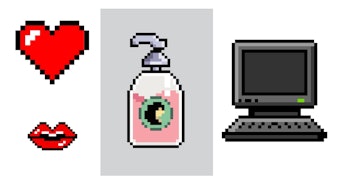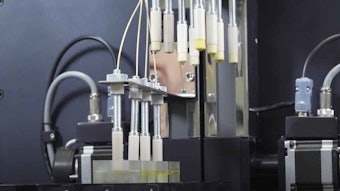Editor's note: Johann W. Wiechers, PhD, of JW Solutions, opens his new series of monthly C&T Today e-newsletter features with this fresh look at nutraceuticals and nanoparticles. Check out the August issue of C&T magazine for more on these hot topics of interest.
Nutraceuticals and Nanoparticles... Not the most logical combination of topics for my very first e-newsletter column, but life is full of surprises. Its abbreviation, N.N., stands for anonymous (at least in The Netherlands), and that actually is a thing that unites these two subjects; public awareness, also known as perception, and what the reality is or could be. Let me explain.
Nutraceuticals is a new category of products that feed and nourish the skin from the inside out. Not a cosmetic that you apply to the area that needs it most, but a cosmetic that you eat. When I asked my wife today what a nutraceutical was, she could not tell me. Nutraceuticals are anonymous. When I explained to her what it was, she was not totally convinced about the world’s latest need for nutraceuticals. I did explain to her that our skin needs specific building blocks like linoleic acid and linolenic acid, which our bodies cannot produce and that they are therefore called essential. "But why not apply them in a cream? Why eat them?" is what she asked. That really got me thinking. Why eat and not apply them topically?
Of course, there is a beautiful link with essential nutrients in food. Eat your skin healthy! But I also remember having performed skin penetration experiments in which you would only get roughly 1% of a dosed amount into the skin. Would eating be better? To answer my wife’s question, I had to do some calculations. Normally, cosmetics are applied at a rate of 1 mg/cm2. Typical levels of linoleic acid in a cream would be maximally 1%, which corresponds to 1 g/100 g cream, or 10 mg/g cream.
As only 1% penetrates, this corresponds to 0.1 mg or 100 µg penetrating into the skin per square centimeter from a single dose. Is this better than eating the essential nutrient? A typical product form for nutraceuticals, if I may believe advertisements on Dutch television, is yoghurt that is sold in small pots. According to certain advertisements, every great-looking woman is bound to suffer from constipation that will make her feel (and, God forbid, look) like a balloon. Despite her shining beauty, she has a tough life--but help is nearby. She eats a pot of yoghurt every day containing a strain of beneficial bacteria and 14 days later, she will feel flat and beautiful again. Finally, she can even have a rest in the restroom.
But let’s assume for a moment that we already have a yoghurt on the market containing the skin-essential molecules linoleic and/or linolenic acid. As the daily volumes of yoghurt consumed are bigger than that of a cosmetic cream, its dose has been reduced to 0.1%, but with a 125-ml pot, still 125 mg enters her body if we assume a specific density of 1 g/ml.
Uptake of essential elements from food is much higher than that percutaneously absorbed; I assume 50%, but it could be much higher. That would mean that 62.5 mg of linoleic acid penetrates into the bloodstream. If only 10% of that goes to the skin and the typical adult body is 1.8 m2 in surface area, this would equate to a level of 6.25 mg/18,000 cm2, which is 0.347 µg/cm2--substantially lower than the 100 µg/cm2 we found in the skin following topical application. But of course, I had to make quite a few assumptions. Even in the best-case scenario (100% uptake into the body, and 100% ends up in the skin), the answer is still only 12.5 µg/cm2--still eight-fold less than delivered via the topical route from a nonoptimized formulation.
Of course, you could increase the level of linoleic acid to 1% in the yoghurt in an attempt to beat the cream, but I think this example shows that if you apply your chemical to where it is needed most, you have a higher probability of success and that targeted application works to your benefit.
Topically applying a formulation is a form of targeted delivery. And nanoparticles are all about delivery, aren’t they? They have become a bit of a hype and every marketer wants to be able to claim the four letters N-a-n-o somewhere on the bottle--and for good reasons, by the way, because these little things have really shown that size does matter. They are small but their actions are large, if not immense. They seem to be able to do everything.
But unlike nutraceuticals, nanoparticles are not completely unknown to the public at large. Media have indicated that they are dangerous and should be handled with care. They have shown to penetrate skin--of course, otherwise they would not work--but the risks are actually minimal. A solid penetrates at a rate 10,000-fold slower than a dissolved molecule. So, what is the risk?
Prof. Dr. Jürgen Lademann (Charité University, Berlin, Germany) spoke at the “Trailblazing the Skin Frontier” Workshop, held at George Washington University in Washington, DC, USA, from Aug. 11-13, 2007. He and his colleagues showed that 5-µm diameter nanoparticles penetrate preferentially into the infundibulum, the small gap between the hair shaft and the inwardly curving skin. This means that titanium dioxide or zinc oxide of the same proportions should also, to some extent, penetrate the skin. But is this a reason for not using particulate sunscreens, as consumer watchdog programs want consumers to believe? Does this not remind you of a similar situation a few years ago when we were told not to use organic sun filters because of their estrogenic activity? As Prof. Lademann said, it is much, really much more dangerous not to use a sunscreen than to have these minute amounts of titanium dioxide or zinc oxide penetrating into the body.
Both topics, nutraceuticals and nanoparticles, have a great future ahead of them. In the case of nutraceuticals, long-term clinical studies will have to show their benefit and these studies will not be as easy as those examining topical cosmetics. Testing topical cosmetics tends to involve on one arm, applying the product with the cosmetic; on the other, applying a placebo or no product at all. Every subject acts as his or her own control. These so-called paired comparisons mean that fewer subjects are required to show a statistically significant difference.
But this will not be possible with nutraceuticals. If you eat the active ingredient, then it may or may not end up in the skin. If it does, it goes everywhere and treats the skin everywhere. Clinical trials demonstrating the benefit of nutraceuticals are therefore more complicated than most other cosmetic trials. And whereas any improvement on a site where a product has been applied topically is immediately assumed to be caused by this product--after all, it makes sense, doesn’t it?--colleagues in the nutraceutical arena have all appearances against them, even if the skin appearance is excellent. How do you conclusively show that the observed skin improvement was caused by eating a product? For the moment being, I remain skeptical--not about the technical side, but about the capabilities to convince the consumer.
Nanoparticles, however, are a new subject area that offers great opportunities. They have great potential as a delivery device, a sensory clue, a reservoir for targeted and controlled and event-controlled delivery, to name a few.
In short, this may have been my first column on these issues for the C&T Today e-newsletter, but I am certain that there will plenty more to report in a year’s time on both subjects. Just stay tuned!
Johann W. Wiechers, PhD
Technical Advisor, Allured Publishing
Independent Consultant for Cosmetic Science
JW Solutions, Gasthuispolderweg 30 2807 LL Gouda, The Netherlands
[email protected]










